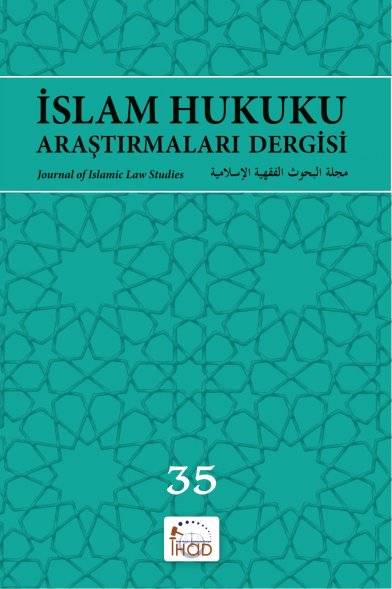Muallimhane-i Nüvvab’dan Medresetü’l-Kudât’a Osmanlı’nın Son Döneminde Kadı Yetiştiren Okullar
Tanzimat Fermanı’nın 1839’da ilan edilmesi ile Osmanlı Devleti’nde birçok alanda düzenlemeler yapılmıştır. Hukuk ve eğitim bu alanların başında gelmektedir. Eski hukuk sisteminin devamı ile birlikte, yeni kanunlaştırma hareketleri başlamış ve batıdaki örneklerine benzeyen Nizamiye Mahkemeleri kurulmuştur. Hem şer‘î mahkemelerde görev yapan kadıların daha iyi ve standart bir eğitim almalarını sağlamak, hem de Nizamiye Mahkemeleri’nde çalışacak, şer‘î hukukla birlikte hukuk bilgisine ve mevzuattaki kanunlara vakıf kadılar yetiştirmek amacıyla İstanbul’da kadılara özel bir ihtisas okulu kurulmasına karar verilmiştir. 1855 yılında bu amaçla Muallimhâne-i Nüvvâb kurulmuş, okul 1885’te Mekteb-i Nüvvâb’a, 1908’de Mekteb-i Kudât’a ve 1909’da da son ve en meşhur hali olan Medresetü’l-Kudat’a dönüşmüş, okulun eğitim sistemi de yaklaşık yetmiş yılı bulan bu süre boyunca değişip, gelişmiştir. Okulun eğitiminde fıkıh ilmi hep ön planda tutulmuş, okula giriş, sınıf geçme ve mezuniyet imtihanlarında başarılı olmanın en önemli şartı fıkıh derslerinde başarılı olmak olarak belirlenmiştir. Bununla birlikte birçok hukuk dersi ile çeşitli yazı ve uygulama dersleri de okul müfredatında yer almıştır. Bu okul, kuruluşundan itibaren binden fazla mezun vermiş, bunlar Osmanlı Devleti’nin dört bir yanında görev almış ve aralarından birçok önemli kişiler yetişmiştir. Osmanlı Devleti’nin bu ilk ve tek kadı okulu 1924’te diğer medreseler ile birlikte kapatılmıştır.
Anahtar Kelimeler:
Medresetü’l-Kudât, Muallimhâne-i Nüvvâb, Mekteb-i Nüvvâb, Mekteb-i Kudât, kadı, kudât
From Muallimhane-i Nuvvab to Medresetu’l-Kudat, Schools for Qadis In The Late Ottoman Period
With the declaration of the Tanzimat Reforms in 1839, the Ottoman State implemented changes in many areas. Among these, law and education were the primary areas. While Sharia law was still in use, new law-making efforts also began to develop. Among these efforts, the Nizamiye Courts were founded as similar to those in the west. It was decided that a specialized school for judges would be established in Istanbul to give sufficient and standardized education to the sharia court judges (Qadis). Here, the Qadis would learn Sharia along with western law and work for the Nizamiye Courts. In 1855, the school was first opened as “Muallimhane-i Nüvvab,” and renamed Mekteb-i Nüvvab in 1885. In 1908, it turned into Mekteb-i Kudat and in 1909, got its final and best-known name, Medresetü’l-Kudat (School of Qadis). Along with these changes, the school’s education system was also changed and improved throughout its almost seventy-year life. Fiqh (Sharia law) courses were considered the foundation of the school’s education and essential to be accepted, to pass the classes, and finally to graduate. Also, along with law courses various writing and practical lessons were included in the curriculum. More than one thousand judges graduated from the school, and some of them were appointed to important administrative positions all over the country. Medresetü’l-Kudat, which was the first and sole judicial school in the Ottoman State, was closed along with other classic madrasah schools in 1924.
Keywords:
Medresetu’l-Kudat, School of Qadis, qadi, qadis,
- ISSN: 1304-1045
- Yayın Aralığı: Yılda 2 Sayı
- Başlangıç: 2004
- Yayıncı: Gençleri Evlendirme ve Mehir Vakfı
Sayıdaki Diğer Makaleler
Bir Terimde Birkaç Anlamın Çakışması “Bağy Örneği”
Abdulganî Karabâğî’nin Şerhu’l-Muhtâr Adlı Eseri
İslam Hukukunda Süt Akrabalığı
Hanefi Belh Ekolünde Özel Örfün Yeri
Vasiyet Ayeti Bağlamında Sünnetin Kur’ân-ı Kerim’i Nesh Etmesi
Hizmet Finansmanında Zimmette Kiralama Modeli ve Fıkhî Temelleri
Değişen Koşullara Göre Kira Bedelinin Değişmesinin Fıkıh Açısından Değerlendirilmesi
